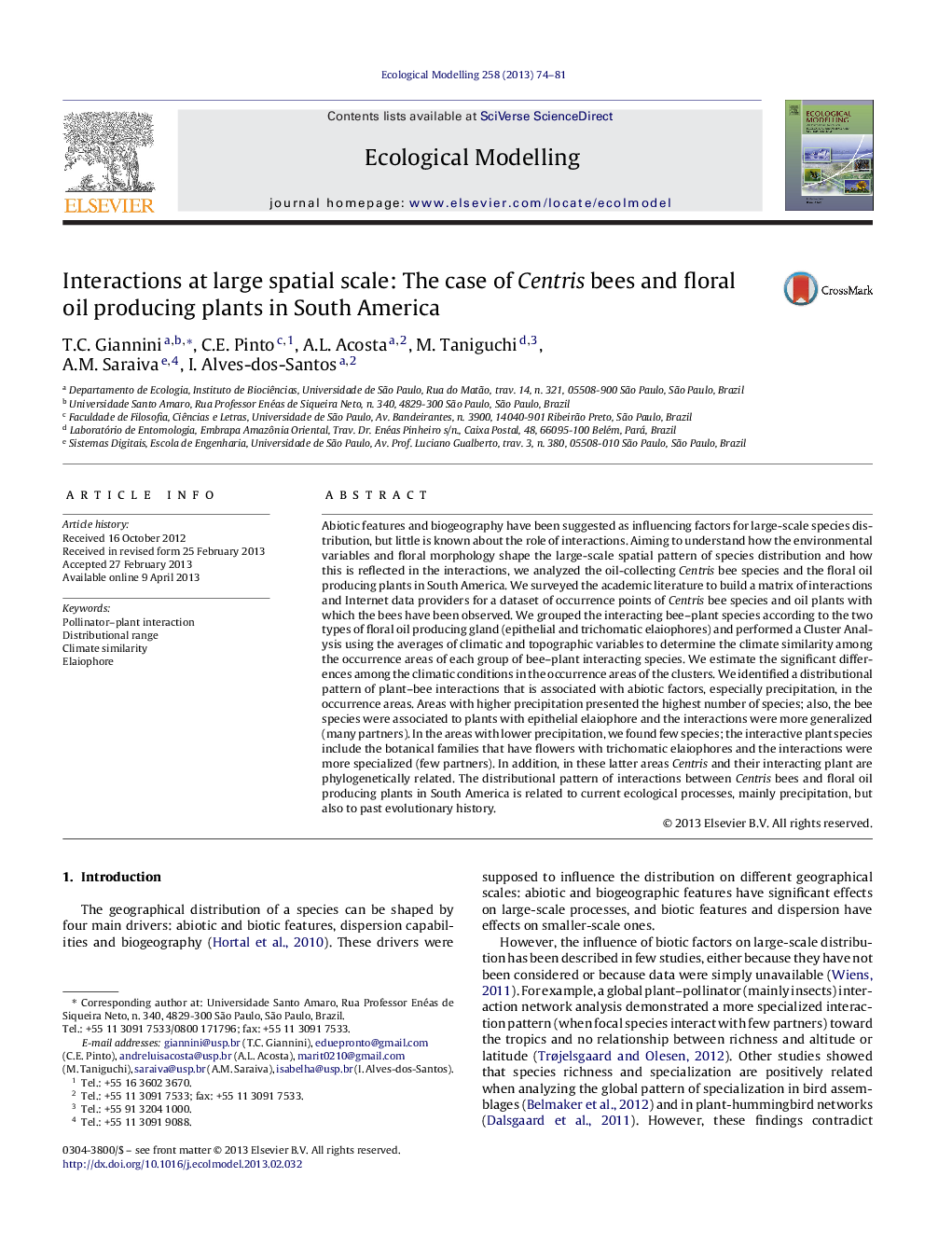| کد مقاله | کد نشریه | سال انتشار | مقاله انگلیسی | نسخه تمام متن |
|---|---|---|---|---|
| 4376106 | 1617487 | 2013 | 8 صفحه PDF | دانلود رایگان |

• We determined the distribution of interacting pollinators and host plants.
• We analyzed abiotic factors and evolutionary history that influence interactions.
• We identified a distributional pattern of plant–bee interactions.
• The pattern is associated with precipitation and species phylogeny.
Abiotic features and biogeography have been suggested as influencing factors for large-scale species distribution, but little is known about the role of interactions. Aiming to understand how the environmental variables and floral morphology shape the large-scale spatial pattern of species distribution and how this is reflected in the interactions, we analyzed the oil-collecting Centris bee species and the floral oil producing plants in South America. We surveyed the academic literature to build a matrix of interactions and Internet data providers for a dataset of occurrence points of Centris bee species and oil plants with which the bees have been observed. We grouped the interacting bee–plant species according to the two types of floral oil producing gland (epithelial and trichomatic elaiophores) and performed a Cluster Analysis using the averages of climatic and topographic variables to determine the climate similarity among the occurrence areas of each group of bee–plant interacting species. We estimate the significant differences among the climatic conditions in the occurrence areas of the clusters. We identified a distributional pattern of plant–bee interactions that is associated with abiotic factors, especially precipitation, in the occurrence areas. Areas with higher precipitation presented the highest number of species; also, the bee species were associated to plants with epithelial elaiophore and the interactions were more generalized (many partners). In the areas with lower precipitation, we found few species; the interactive plant species include the botanical families that have flowers with trichomatic elaiophores and the interactions were more specialized (few partners). In addition, in these latter areas Centris and their interacting plant are phylogenetically related. The distributional pattern of interactions between Centris bees and floral oil producing plants in South America is related to current ecological processes, mainly precipitation, but also to past evolutionary history.
Journal: Ecological Modelling - Volume 258, 10 June 2013, Pages 74–81